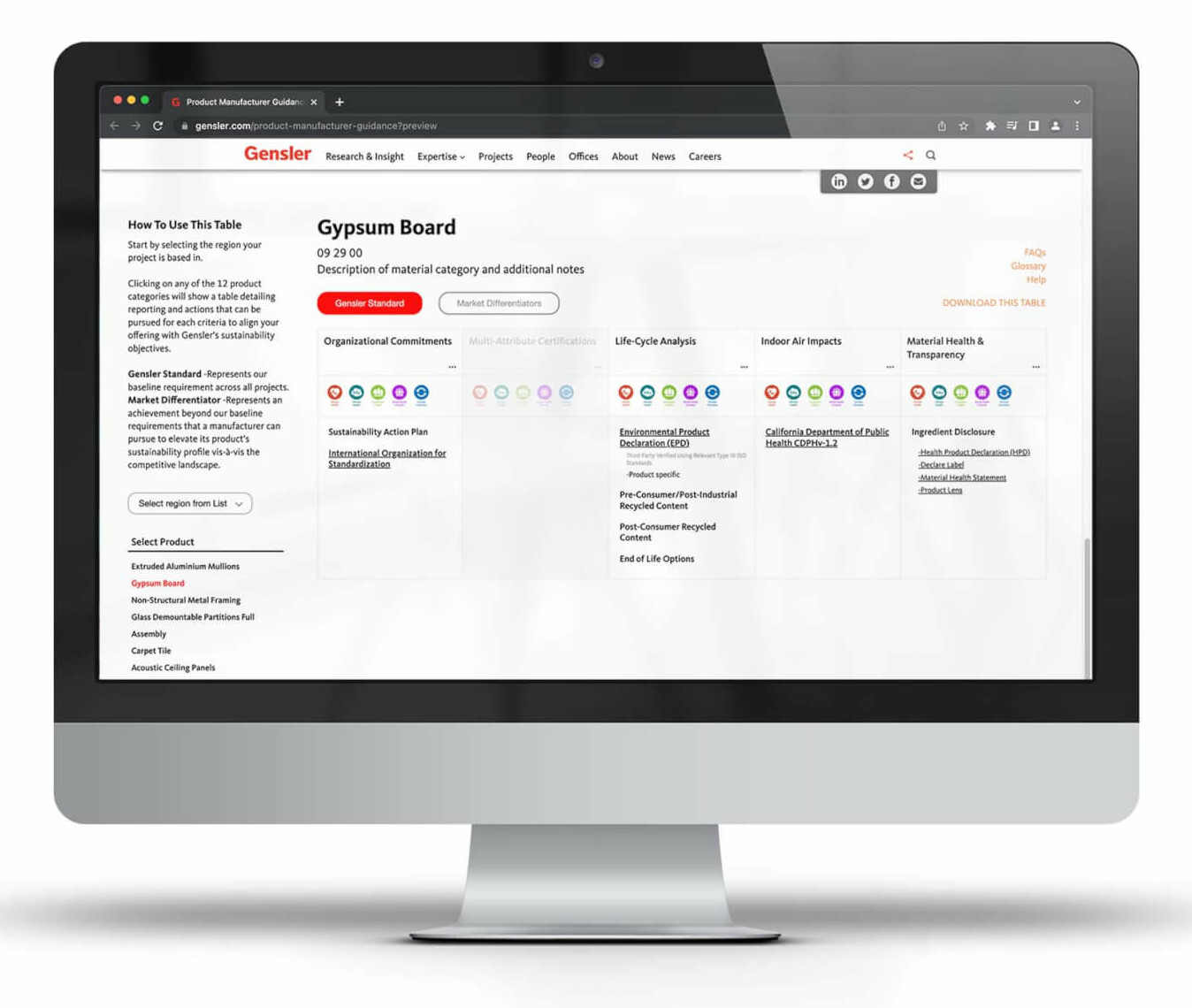Gensler’s Product Sustainability (GPS) Standards send a market signal to manufacturers, clients, and the AEC industry in general: The largest architectural services firm in the world is on a quest to not spec toxic or environmentally harmful products in its work worldwide. The GPS is still in its early phases, but it’s a step toward a more circular economy and less carbon-intensive industry.
The open-source resource disseminates information from reputable certifications—LEED, BREEAM, Cradle-to-Cradle—and other third-party entities so that product manufacturers can easily understand Gensler’s range of individual and product-specific sustainability targets. GPS Standards went into effect in January and Version 1.1 was announced in April. However, it’s important to note the standards are never set; they require continual maintenance as certifications and expectations continually update and improve through research. But the GPS Standards certainly encourage more research, transparency, and generally challenge the industry at a market-wide scale to do better.
David Briefel, a principal at Gensler who led the development and implementation of GPS, told AN that product category selections came down to three main questions: What does Gensler specify the most? How much information is available on the product? And how available are these products in different markets?
From these questions, the firm compiled a list of 12 product types that will surely be expanded in future iterations. Currently, the information and data is readily available online—for use by manufacturers or even other architecture practices—for the following product types: acoustic ceiling tiles, panels, and suspension grids; batt insulation; board insulation; carpet tile; decorative glass; glass demountable partitions; gypsum board; interior latex paint; non-structural metal framing; resilient flooring and base; systems furniture workstations; and task chairs.

The information is laid out in an easy-to-read chart format, providing links to sustainability commitments and details such as the targeted minimum percent of recycled content for a product type. Users can opt to view and follow the Gensler Standard or the Market Differentiators, the standards for an ideal world that go beyond the Gensler requirements.
Noting some omissions from the current list, Briefel explained how it would be difficult today to add concrete, steel, or other similar heavyweight architectural materials to the standards.
“Architects don’t always have control over concrete specification and it is also extremely regional,” he told AN. “And because the technology for low-carbon concrete is still somewhat in its infancy, it’d be very hard for us to set targets and start in markets where the products just aren’t available.”

Nevertheless, the addition of concrete is an aspiration for future iterations. Other additions Briefel is looking toward are improved labor and manufacturing practices and conditions and take-back programs, which aren’t currently profitable for companies. Therefore, market pressures applied to these systems that can stem from projects like GPS could be instrumental in moving the needle.
“Not many manufacturers have third-party validation around their manufacturing processes,” Briefel said. “But we hope that by putting some of that criteria in Market Differentiator we’re signaling what’s going to be important in the future.”
For now, Gensler has placed its focus on specified products it, as an architecture firm, has control over. However, the standards relay that reuse of any material or object—whether metal cladding or a desk chair—is always encouraged. Per GPS Standards, this supersedes the selection of any new material. The firm has educated its designers and material librarians on the standards and regularly meets with manufacturers. A visit to the office material library and in-situ showroom highlights the myriad products at designer’s fingertips that meet or exceed these baselines.
Briefel looks forward to a day when the work of sustainability personnel are not an afterthought, next step, or a box to check. “When you’re talking about sustainability experts, most of us hope that we’re obsolete at some point—that we do such a good job of integrating into teams that it’s something that’s automated, or that it becomes such standard practice embedded in projects that it becomes a requirement.”











